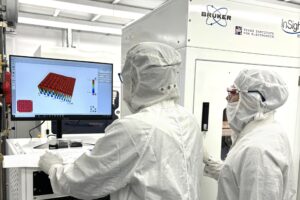Dr. Hans Mark, aerospace engineering professor at The University of Texas at Austin, will be honored with the 2008 General James E. Hill Lifetime Space Achievement Award from the Space Foundation for more than 50 years of impact and leadership in space policy and the space industry.

|
| Dr. Hans Mark will be honored with the 2008 General James E. Hill Lifetime Space Achievement Award from the Space Foundation for more than 50 years of impact and leadership in space policy and the space industry. |
| Photo: Caroling Lee |
“Dr. Mark was a close friend and colleague of our late chairman, General Jim Hill, in whose honor we give this award,” said Elliot G. Pulham, president and chief executive officer of the Space Foundation.
“Their work to establish Air Force Space Command set the groundwork for the organization that serves our nation today and gave impetus to the birth of the Space Foundation.”
Mark, a former NASA deputy administrator and former U.S. Air Force secretary, will also be recognized by the international non-profit organization for championing space exploration through interdisciplinary research, public service and teaching. He will be honored April 9 at the 24th National Space Symposium during a luncheon co-sponsored by the Space Foundation and Boeing Co.
A member of the prestigious National Academy of Engineering, Mark escaped from Nazi Germany in 1940 with his family, moving to the United States. He earned a bachelor of science degree and a doctor’s degree in physics in the 1950s.
His contributions to the space industry have influenced U.S. national security and the scope of civilian space programs. His achievements include supervising the development of space probes exploring Jupiter and Saturn, establishing the U.S. Air Force Space Command, committing funds to develop the Global Positioning System and initiating the nation’s involvement in the International Space Station program.
Mark began his research career in the 1950s by helping develop nuclear reactors for submarines in and tiltrotor helicopters that can take off like airplanes. The U.S. Marine Corps now has more than 50 tiltrotor helicopters, which Mark advocated for in the 1970s as director of the NASA-Ames Research Center.
The holder of the John J. McKetta Centennial Energy Chair in Engineering at the university’s Cockrell School of Engineering is now leading an effort to develop electromagnetic railguns for naval ships. The railguns would be an alternative to missiles, and would use electricity to launch projectiles that can travel faster than missiles, and be launched in a more flexible, precise manner. Railgun components are being fine-tuned at the university’s Institute for Advanced Technology, with field tests occurring at numerous military facilities.
Mark has held positions throughout his career that involved oversight of technology improvements for the military. He was secretary of the U.S. Air Force from 1979-1981, creating the U.S. Air Force Space Command Center in Colorado. As U.S. Air Force secretary, he also directed the National Reconnaissance Office, managing the nation’s satellite reconnaissance program.
From 1981 to 1983, Mark was deputy administrator of NASA, overseeing the first 13 space-shuttle flights and the country’s initial involvement in the international space program. He became chancellor of The University of Texas System in 1984, and served in that capacity until 1992. Mark was then tapped to become director of Defense Research and Engineering at the U.S. Department of Defense in 1998. He held that position until returning to The University of Texas at Austin in 2001, where he teaches and conducts aerospace engineering research.
A member of numerous professional societies, Mark’s previous honors include the 2007 U.S. Navy’s Distinguished Public Service Award, several distinguished service and outstanding leadership medals from NASA and the U.S. Defense Department’s 2001 Distinguished Public Service Medal.
A photo of Mark is available online.
The Space Foundation based in Colorado Springs, Colo., is involved in space awareness activities, major industry events and educational enterprises that bring space into the classroom.



